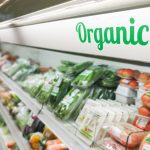
Organic group send petition to federal government
Feds asked to establish policies and programs to help organic producers meet consumer demand, create sustainable food systems

U.S. cattle vets rename bovine bird-flu
CDC asks state health authorities to have plans in place to test, treat farm workers; says risk to humans still low

Feds fund agriculture and food processing robotics projects

Avian influenza detected in person exposed to dairy cattle
Alberta Milk issues new biosecurity, human safety guidelines

Cargill renews top-up payment for CRSB-certified beef

Lack of national guidelines for ag carbon offsets flagged
Canada is falling behind in agriculture carbon market, report from RBC says

Local food system would reap big economic benefits researcher says
B.C. researchers found that the Okanagan could produce two thirds of its own food while maintaining exports

Alberta barley breeding centre relaunched

Agriculture workers not mentioned in TFW rule changes
Food processing sees foreign worker limit reduced by ten per cent; construction, healthcare exempted



